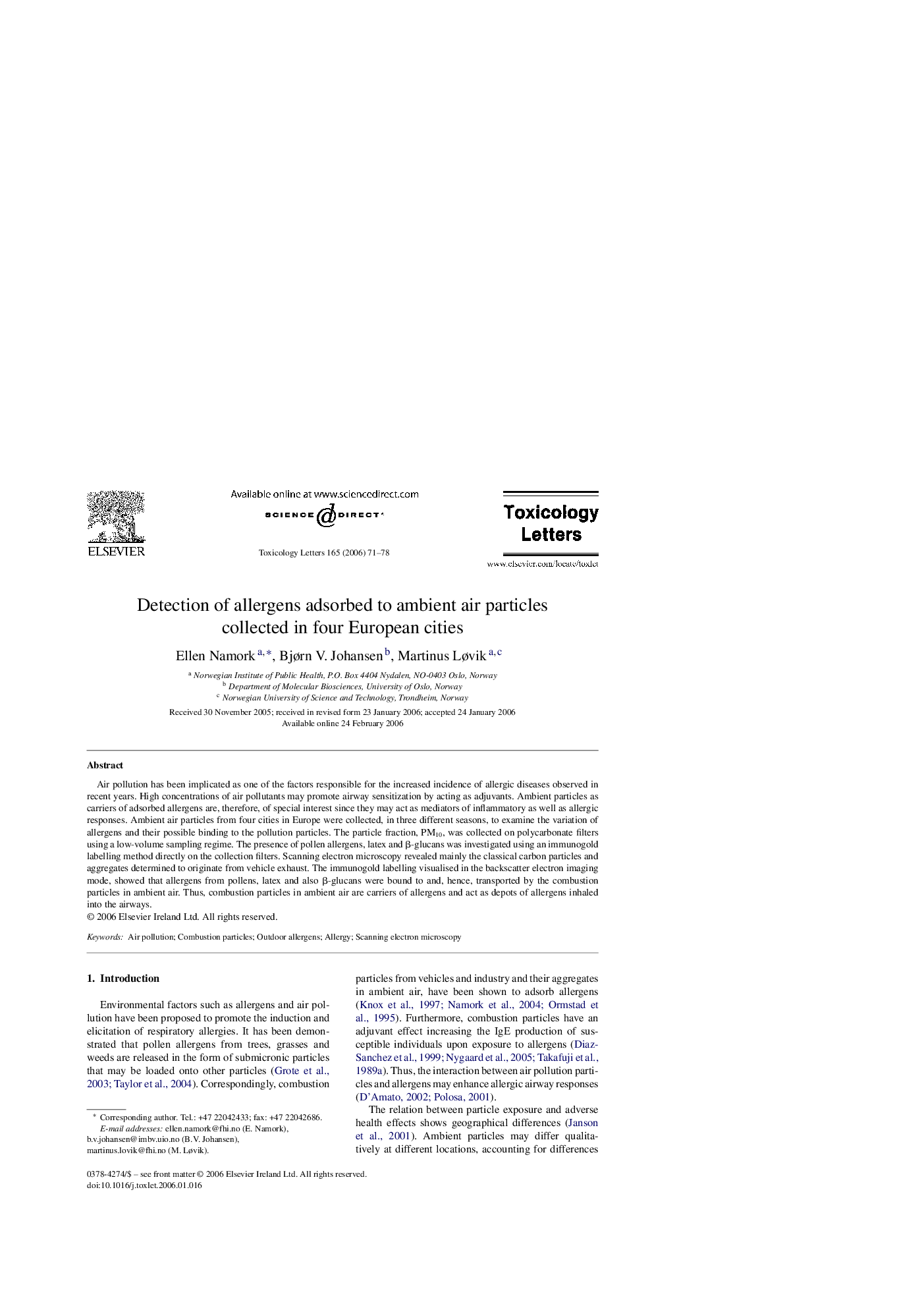| Article ID | Journal | Published Year | Pages | File Type |
|---|---|---|---|---|
| 2601642 | Toxicology Letters | 2006 | 8 Pages |
Air pollution has been implicated as one of the factors responsible for the increased incidence of allergic diseases observed in recent years. High concentrations of air pollutants may promote airway sensitization by acting as adjuvants. Ambient particles as carriers of adsorbed allergens are, therefore, of special interest since they may act as mediators of inflammatory as well as allergic responses. Ambient air particles from four cities in Europe were collected, in three different seasons, to examine the variation of allergens and their possible binding to the pollution particles. The particle fraction, PM10, was collected on polycarbonate filters using a low-volume sampling regime. The presence of pollen allergens, latex and β-glucans was investigated using an immunogold labelling method directly on the collection filters. Scanning electron microscopy revealed mainly the classical carbon particles and aggregates determined to originate from vehicle exhaust. The immunogold labelling visualised in the backscatter electron imaging mode, showed that allergens from pollens, latex and also β-glucans were bound to and, hence, transported by the combustion particles in ambient air. Thus, combustion particles in ambient air are carriers of allergens and act as depots of allergens inhaled into the airways.
